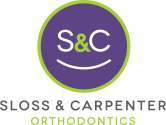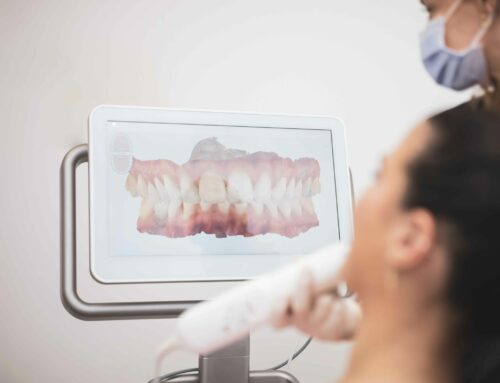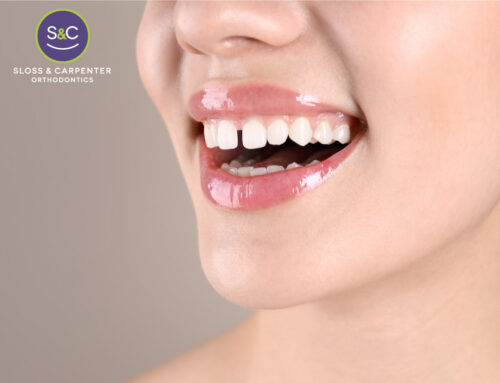Centennial Orthodontic treatment not only addresses the aesthetics of a smile, but it also contributes to improved oral health, reduces the risk of diseases, and fixes jaw issues. In recent years, orthodontics appliances have been evolving and using improved technology and techniques, including different types of braces such as invisible aligners, Centennial ceramic braces, and lingual braces.
But before these improvements took place, the first orthodontic appliances used different materials such as steel, metals, and gum rubber. In the 18th century, french scientists took the first steps in designing orthodontic treatments. However, we found real progress in the 20th and 21st centuries.
How Do Orthodontic Braces Work?
Traditional metal braces are an effective method for improving your oral health and achieving a healthier smile.
This orthodontic treatment works by applying controlled and gentle pressure to the teeth, moving them into their corrected positions. The average treatment time can vary depending on the complexity of the case. Here’s how orthodontic braces work:
First, there is an initial assessment where the orthodontist examines the patient’s teeth and creates a treatment plan that works on the individual’s specific needs. In the next step, the dental professional places metal wires and brackets on the teeth’s surface.
Once the teeth are in their ideal position, the patient needs to wear a retainer that helps them to maintain the new alignment. The final step refers to the completion of the treatment, and the patient ends up with a more aligned smile and straighter teeth.
What Are Invisalign Clear Aligners and How Do They Work?
Invisalign represents an alternative to braces. They are made from transparent plastic, making them more comfortable and nearly invisible. If you are wondering how Invisalign clear aligners work, here is a small guide:
The process begins when the orthodontist determines if Invisalign is the right treatment for the patient. If it is a suitable option, they will create a special treatment plan that addresses the dental needs of the patient.
Once the plastic aligners are ready, the patient receives their customized set, which they should wear for about 20 to 22 hours per day. The appliances will exert pressure on certain teeth, guiding them into their intended positions.
Invisalign vs. Braces
There is no definitive answer to this question since the choice between Invisalign and traditional braces depends on several factors that might include individual preferences and the complexity of the dental issues. Both systems have proven to be effective and have their advantages, such as:
1. Effectiveness:
Traditional braces can be more effective in a wide variety of dental misalignments. They can address simple and complex cases that require more precise control over the movement of the teeth. Invisalign can be highly effective as well. However, it may not be suitable for complex cases of malocclusion.
2. Comfort:
While metal braces are made of brackets and wires, Invisalign is made from smooth plastic. These material differences are important because patients who wear braces can find the metal brackets and wires to be uncomfortable and cause irritation.
3. Removability:
Traditional metal braces are fixed appliances, so they can not be removed until the treatment is completed. This means there are more limitations and restrictions for patients who use this traditional treatment.
Invisalign has a significant advantage that allows patients to remove their clear aligners and helps them to maintain better oral hygiene.
How Do You Know If You Need Braces or Invisalign?
The decision between Braces or Invisalign depends on the complexity of the case. Traditional metal braces can handle more difficult cases, where precise control over tooth movement it’s crucial.
On the other hand, Invisalign may be a viable treatment option for mild to moderate cases of crowding, spacing, overbites, and underbites.
If you want to know which option is right for you, the best thing you can do is to consult with an experienced orthodontist, who can evaluate your dental needs and help you make an informed decision.
What Is the Price Difference Between Braces and Invisalign?
Invisalign is known for using the highest quality technology and materials. For instance, clear aligners are made with SmartTrack, a special medical plastic. As a consequence, the cost of treatment can be more expensive than traditional metal braces.
In case you are interested in a cheaper treatment, then it is recommendable that you consider traditional braces.
Although the economic aspect of the treatment can be an important factor, you should not make a decision based only on the cost of orthodontic appliances.
Discover the Perfect Fit for You: Invisalign or Braces?
Now that you know what Invisalign clear aligners and conventional braces are and how they work, you might want to start your orthodontic treatment in Centennial.
At Sloss & Carpenter Orthodontics, the team offers several orthodontic treatments, including traditional braces and clear aligners, that can help you achieve the smile of your dreams.






